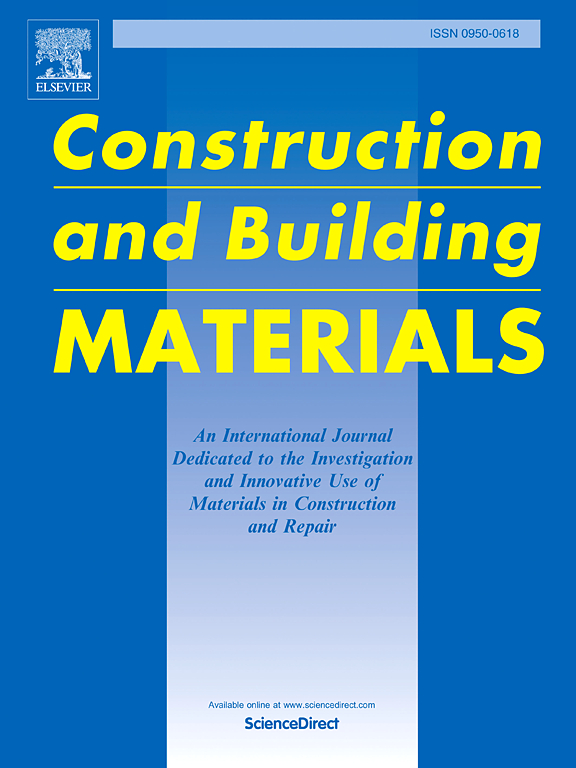赤泥、沙漠砂和磨细高炉矿渣对粉煤灰基土工聚合物机械性能和微观结构的影响
IF 7.4
1区 工程技术
Q1 CONSTRUCTION & BUILDING TECHNOLOGY
引用次数: 0
摘要
本文章由计算机程序翻译,如有差异,请以英文原文为准。
Effects of red mud, desert sand, and ground granulated blast furnace slag on the mechanical properties and microstructure of fly ash-based geopolymer
The development of sustainable alternatives to traditional Portland cement is critical in reducing the global carbon emissions. This study explores the influence of red mud (RM), desert sand (DS), and ground granulated blast furnace slag (GGBFS) on the mechanical and microstructural properties of fly ash-based (FA) geopolymer. An orthogonal test is employed to optimize the mix ratio by varying the NaOH concentration, the Na2SiO3/NaOH mass ratio, and the alkali-activating solution to fly ash mass ratio (AAS/FA). The results indicate that the optimal mix—consisting of 16 mol/L NaOH, a Na2SiO3/NaOH mass ratio of 3.0, and an AAS/FA ratio of 0.40—achieves the highest compressive and flexural strength. The inclusion of GGBFS markedly enhances the geopolymers' mechanical properties, with 20 % GGBFS content resulting in an 83.03 % increase in compressive strength and a 93.75 % increase in flexural strength after 28 days. Microstructural analyses reveal that the addition of RM, DS, and GGBFS improved the density and reduced the porosity of the fly ash-based geopolymers, thereby enhancing their physical properties. The study demonstrates that the integration of these industrial by-products not only enhances the properties of fly ash-based geopolymer but also presents an efficient strategy for waste utilization. This approach advances environmentally sustainable construction materials, supporting global efforts to reduce carbon emissions.
求助全文
通过发布文献求助,成功后即可免费获取论文全文。
去求助
来源期刊

Construction and Building Materials
工程技术-材料科学:综合
CiteScore
13.80
自引率
21.60%
发文量
3632
审稿时长
82 days
期刊介绍:
Construction and Building Materials offers an international platform for sharing innovative and original research and development in the realm of construction and building materials, along with their practical applications in new projects and repair practices. The journal publishes a diverse array of pioneering research and application papers, detailing laboratory investigations and, to a limited extent, numerical analyses or reports on full-scale projects. Multi-part papers are discouraged.
Additionally, Construction and Building Materials features comprehensive case studies and insightful review articles that contribute to new insights in the field. Our focus is on papers related to construction materials, excluding those on structural engineering, geotechnics, and unbound highway layers. Covered materials and technologies encompass cement, concrete reinforcement, bricks and mortars, additives, corrosion technology, ceramics, timber, steel, polymers, glass fibers, recycled materials, bamboo, rammed earth, non-conventional building materials, bituminous materials, and applications in railway materials.
 求助内容:
求助内容: 应助结果提醒方式:
应助结果提醒方式:


